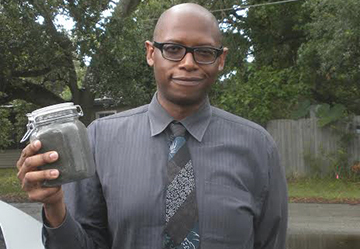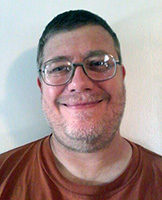
ORLANDO, Fla. – A park was the scene here on Memorial Day (May 25) of a symbolic ceremony of burial for the Confederate flag, seen by many as a banner of oppression and glorification of the “Lost Cause” – defense of the antebellum South’s social and political system, which was based on the exploitation and dehumanization of black slaves.
Julian Chambliss, a history professor at Rollins College in Winter Park, Fla., organized the event. The history behind the flag has been distorted, he said. “It does not necessarily represent the reality of Southern history,” Chambliss said, “nor does it represent contemporary Southern life.”
This was one of 13 Confederate flag funerals held at the 13th hour (1 p.m.) on Memorial Day in the 11 Southern states that made up the Confederacy along with the “border” states of Kentucky and Missouri, which had rival Union and Confederate governments during the Civil War.
All were the brainchild of John Sims, an artist from Sarasota, Fla., who wanted to create dialogue around assumptions in our popular culture about the flag’s meaning. It came on the heels of the 150th anniversary of the South’s surrender at Appomattox Court House and during a period which has seen significant debate around issues of race and racism, prompted by the police killings of Michael Brown, Freddie Gray and several other unarmed African American men.
Sims, said Chambliss, has, for 15 years, been doing an art project that involves re-coloring the “Stars and Bars” in various ways. “He’s manipulated the imagery associated with the Confederate flag, and as a result he’s really challenged people to think about what that flag actually means,” said Chambliss.
“That mythology of the flag has been really compelling and transforming, and at some level marginalizing [to] black and white people in the South since the end of the Civil War,” said Chambliss.
“So the idea of burying it …is a metaphor for disrupting a kind of repressive and regressive symbol.”
James Tschannen, a construction worker who attended the event with several friends, said that the “Rebel” flag has “historically been used in racist ways to terrorize African Americans and minorities of all types throughout the South.”
“The heritage is hate,” Tschannen added, referring to the slogan, “Heritage Not Hate,” used by those who see the flag as a symbol of white Southerners.
Chambliss said he hoped this public art event would compel those who accept the flag as “a part and parcel of the Southern aesthetic” to question whether it is an appropriate symbol of the region’s culture and history.
“There’s a mythology surrounding the Confederacy and the South that doesn’t equate to its history,” said Moriah Russo, a Rollins College graduate and former student of Chambliss. “People who defend the Confederate flag … are misguided, and, really, what they’re defending is a false mythology of their heritage, which [to them] is somehow separable from … oppressing black people as slaves.”
Michael Madry, who lives a few blocks from the park, said that flying the Confederate flag is “tantamount to treason” since the Southern states’ secession had led to the bloodiest conflict ever fought on American soil.
“What that [flag] stood for was slavery, slave labor, ownership of people,” said Madry. “You can’t look at me and tell me ‘That’s my tradition,’ without telling me you support that [slavery], because those things are not exclusive.”
Chambliss initially intended to burn the flag during the ceremony, but because Orlando bans fires in its parks, he incinerated it the day before. “It was never about the burning for me, it was always about disrupting the symbol,” he said, “so, at some level, I feel actually happy that I was able to separate the burning from the dialogue.”
The ceremony included a poetry reading and the playing of a special arrangement of “Dixie” by a local musician. (This piece quoted some of the words to “Dixie” as sung in the North during the Civil War: “Away down South in the land of traitors, rattlesnakes and alligators… / Where cotton’s king and men are chattels, Union boys will win the battles.”)
Following this, Chambliss handed out spoonfuls of ashes to participants who lined up one-by-one to somberly deposit them in a nearby pond.
The event attracted a handful of counter-demonstratrors, one of them with a Confederate flag, while another held a sign that read “Obama Go Home-Give Our USA Back.” Reportedly, this person earlier had pulled up in the parking lot and asked bystanders if they knew where the “n—s” were. (See the video below.)
Photo: Julian Chambliss. | Ben Markeson/PW









